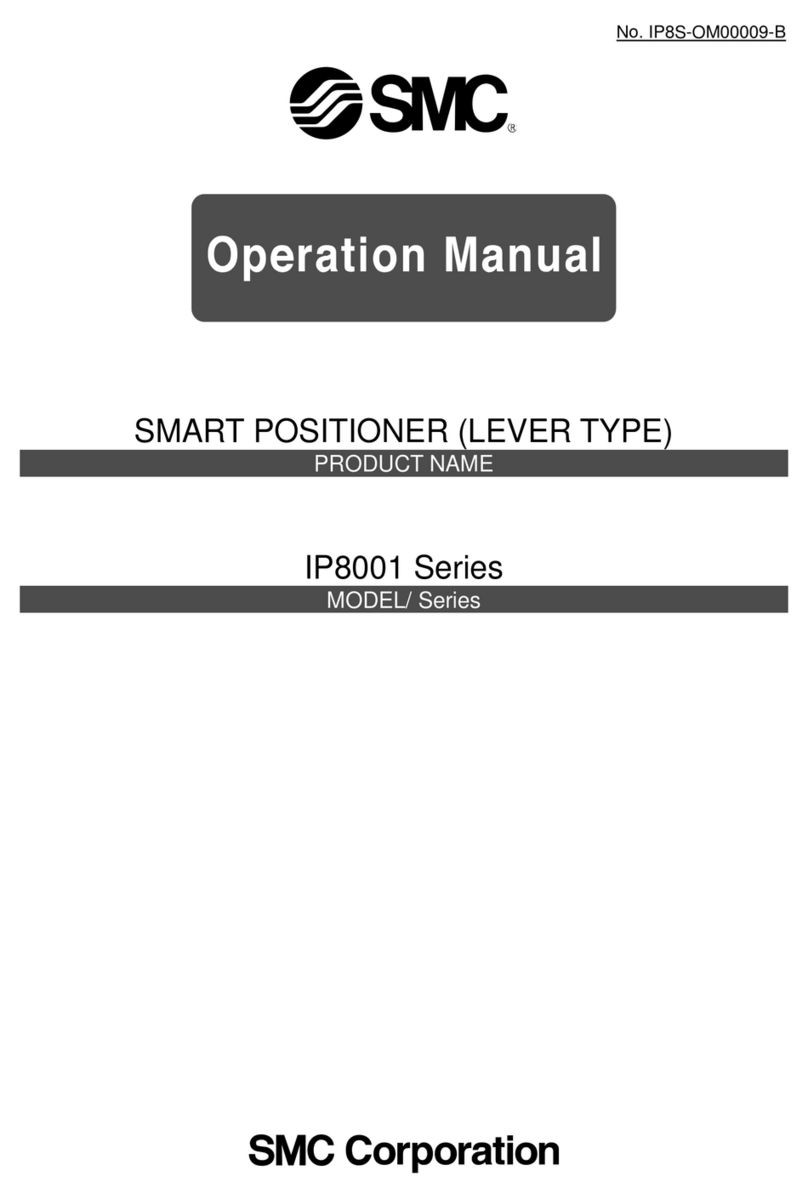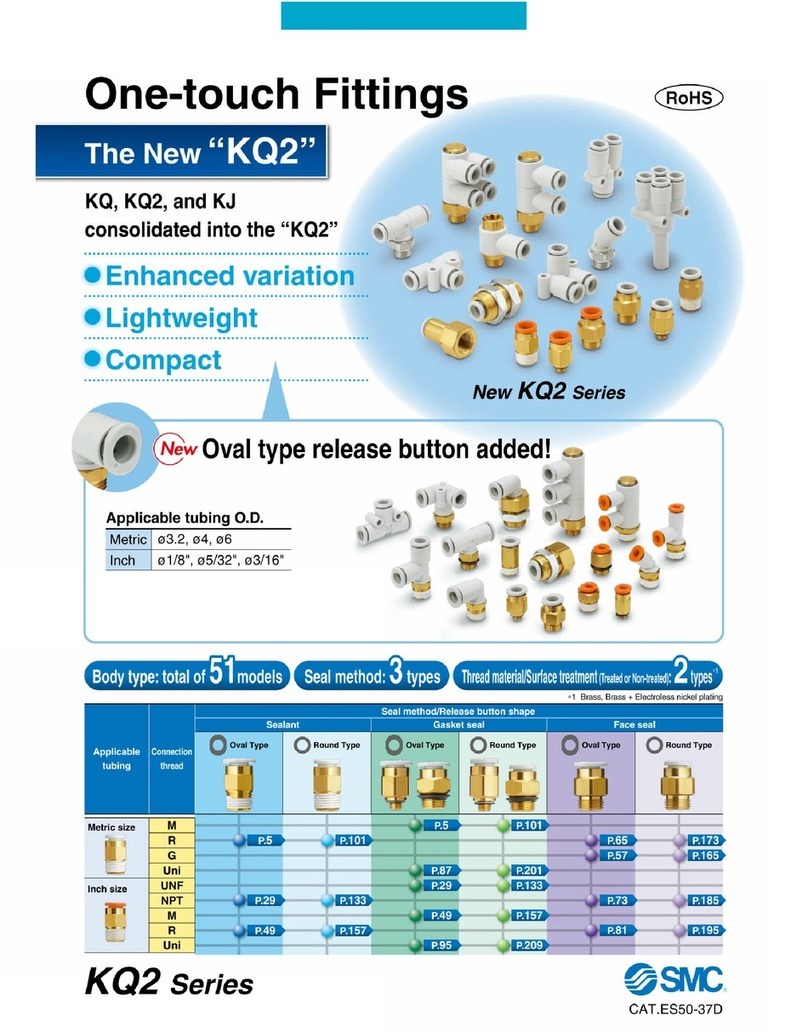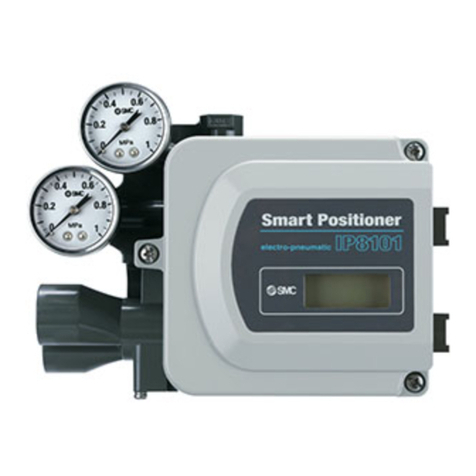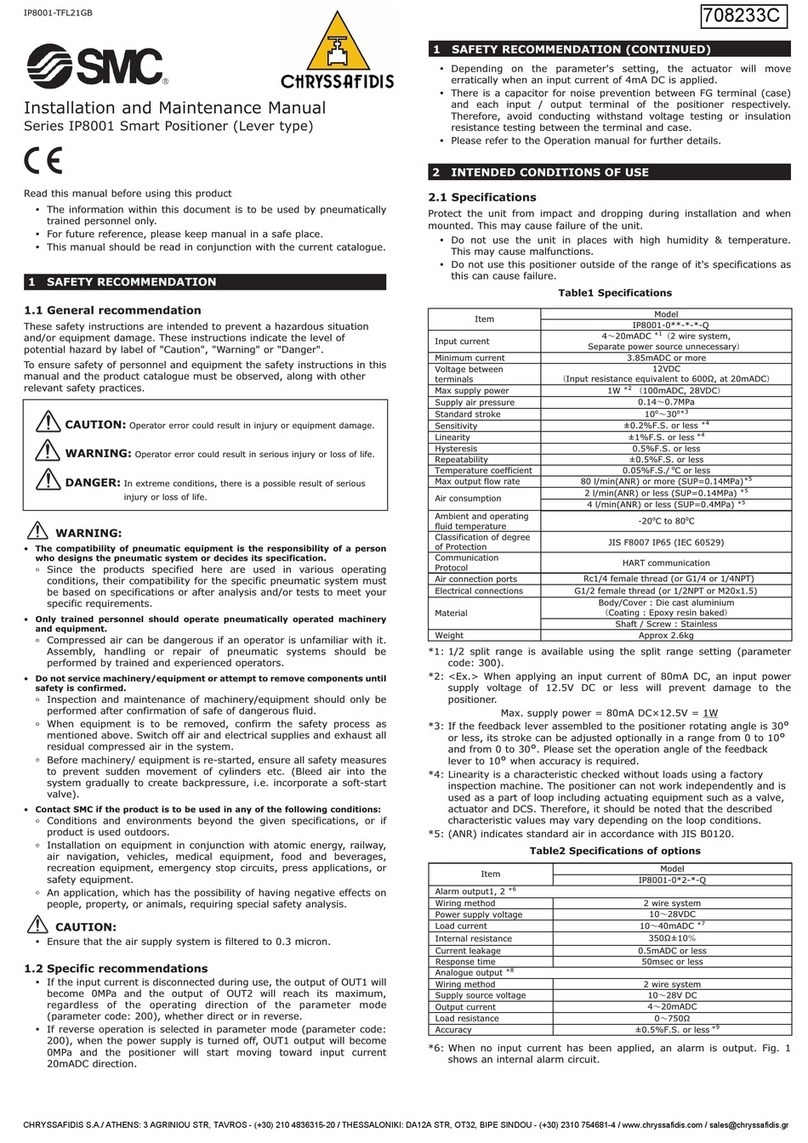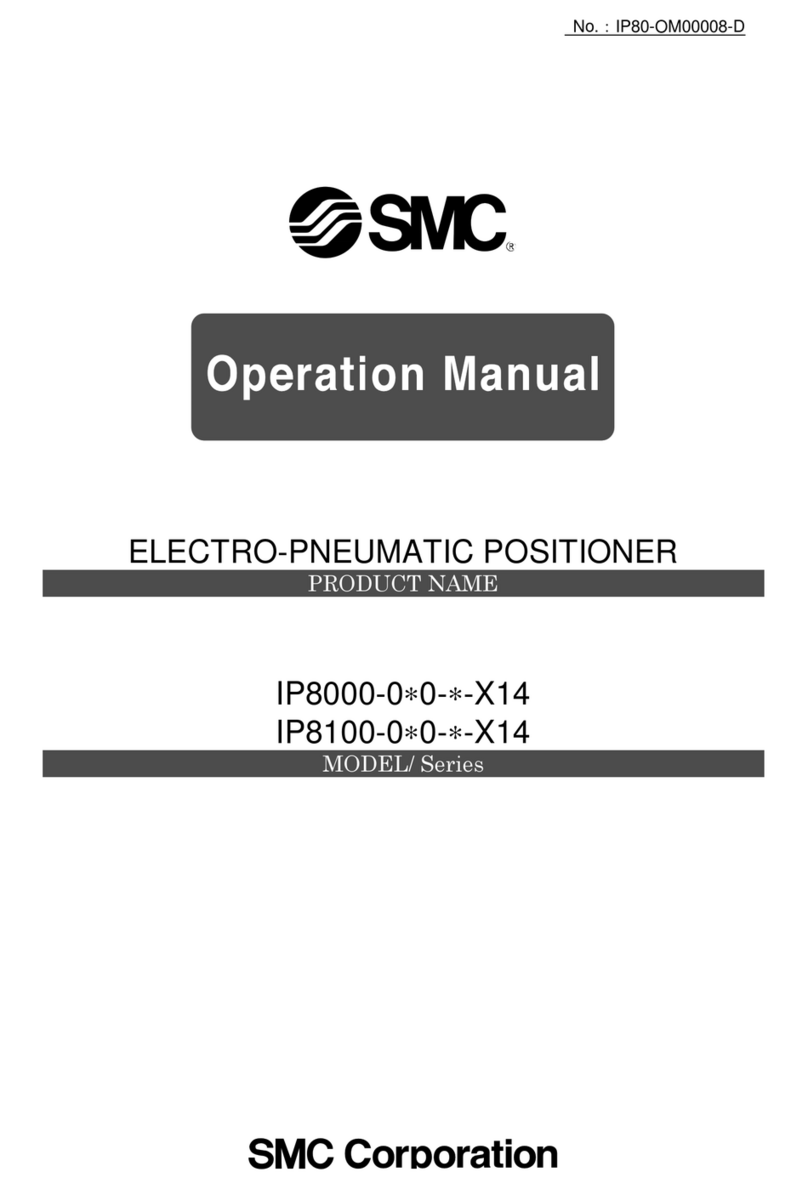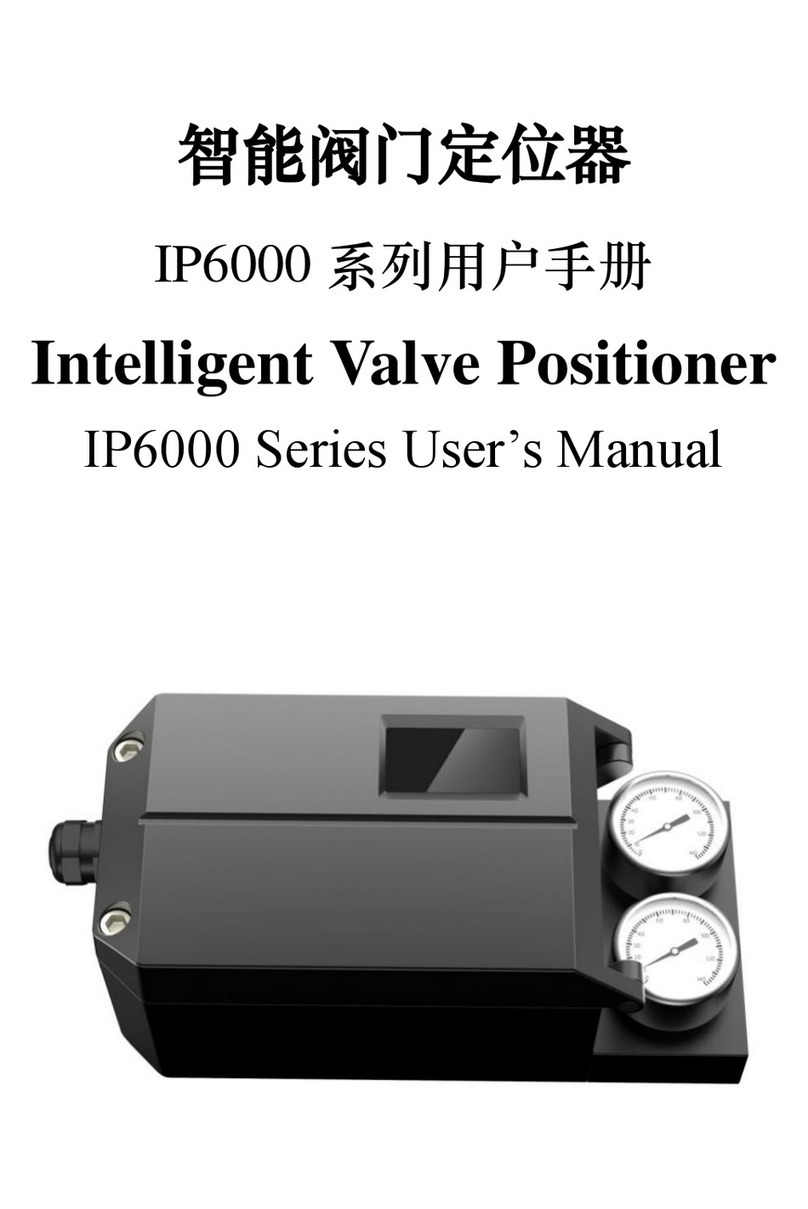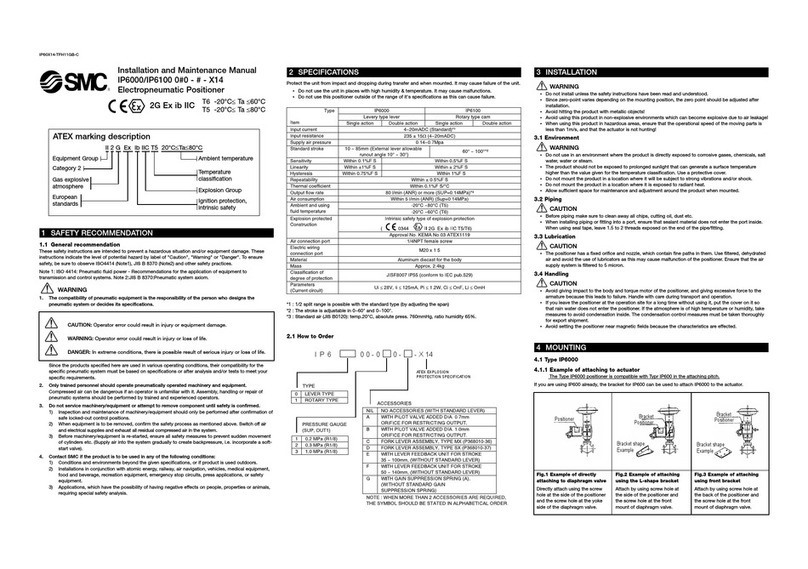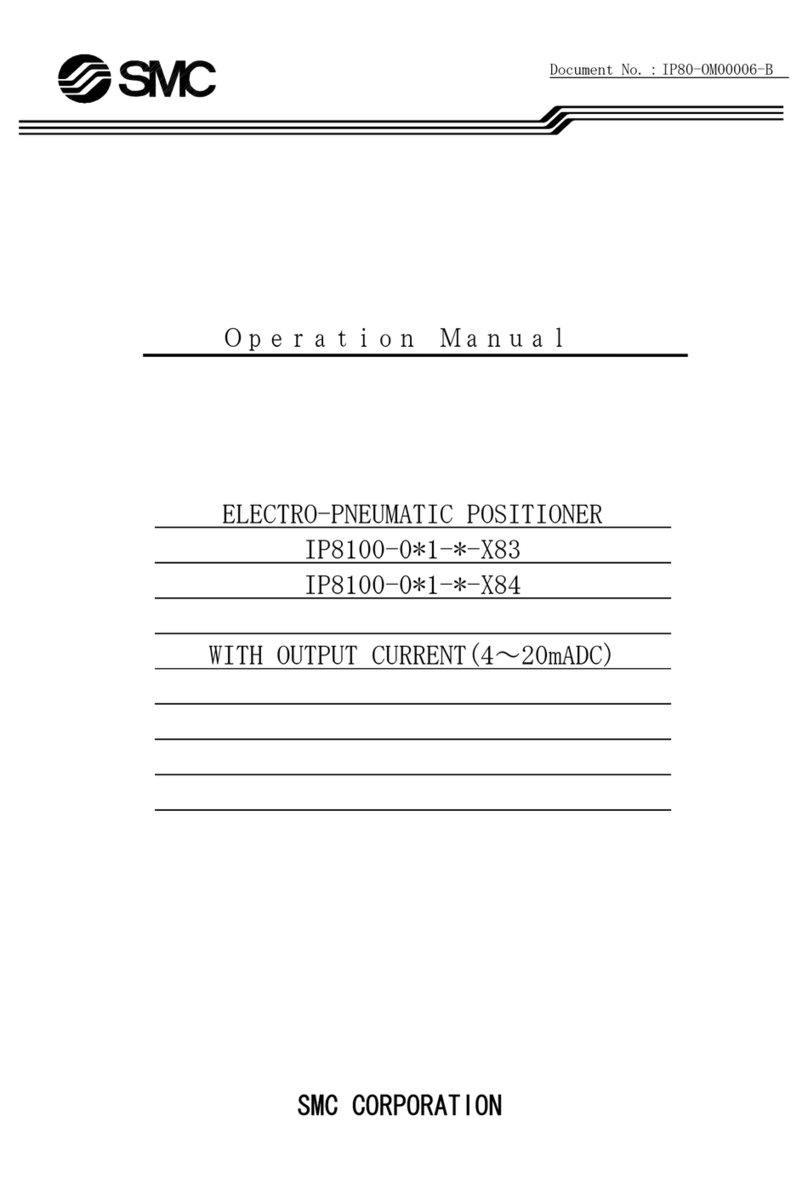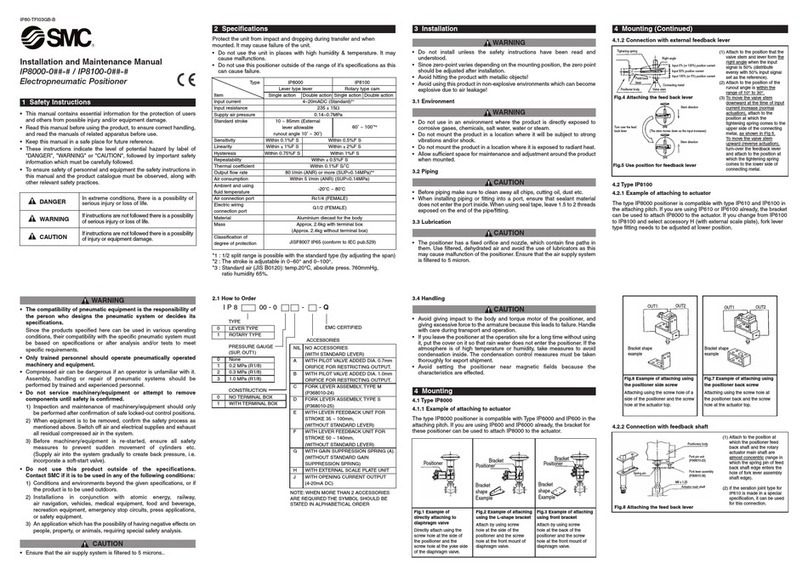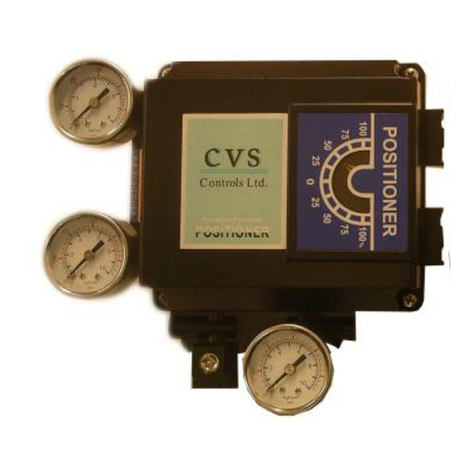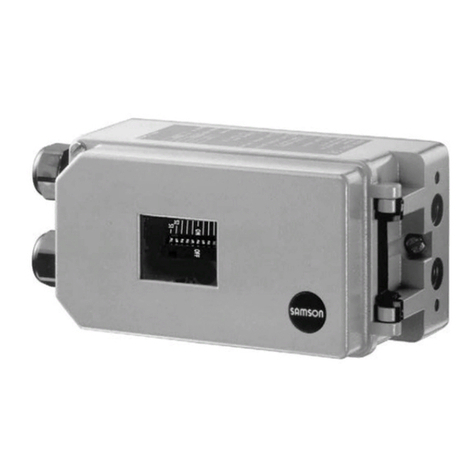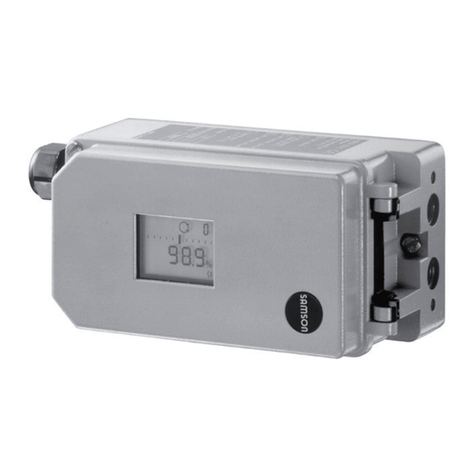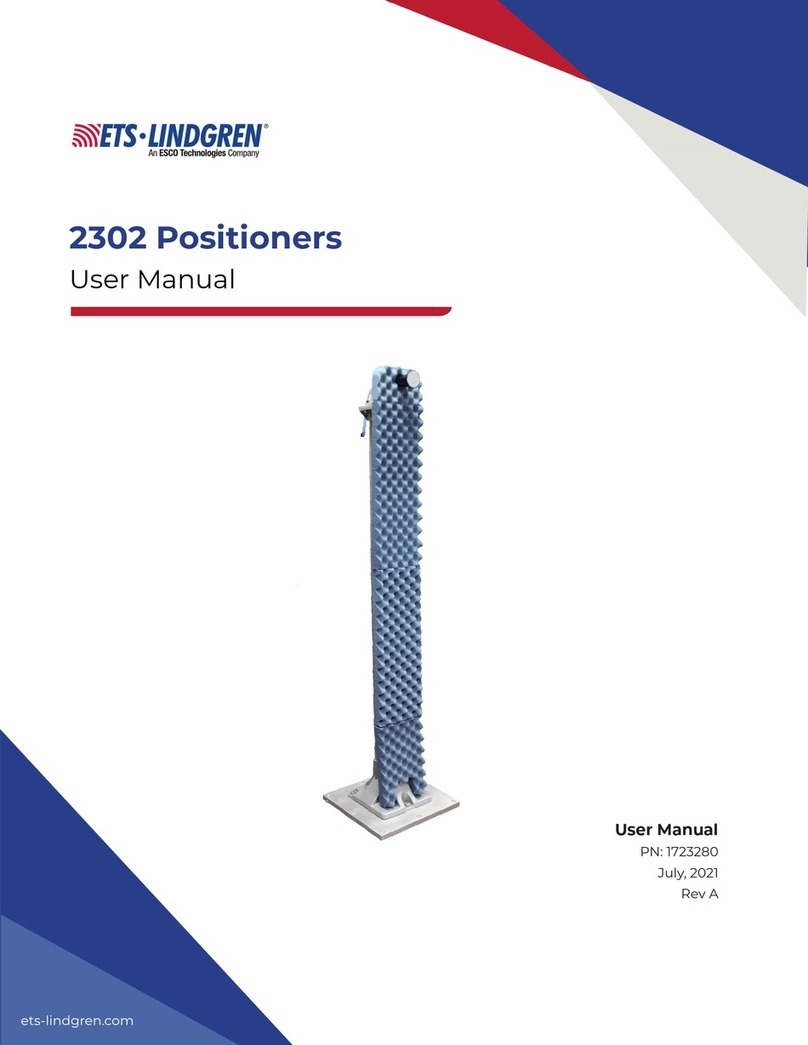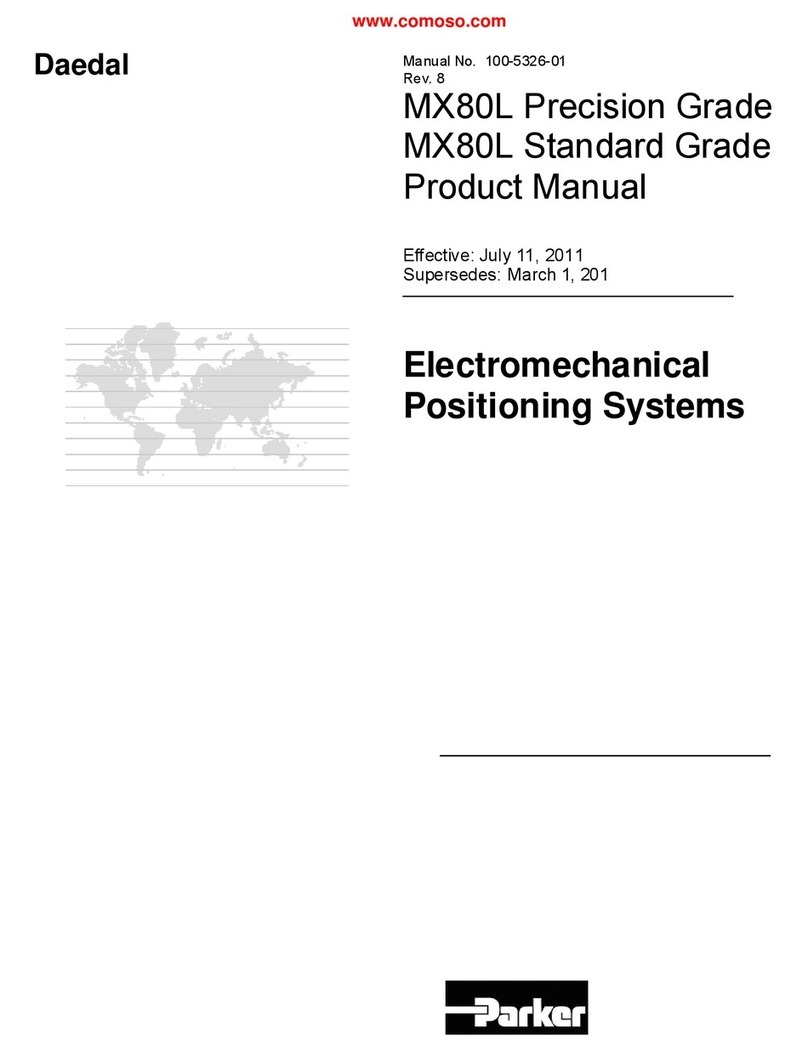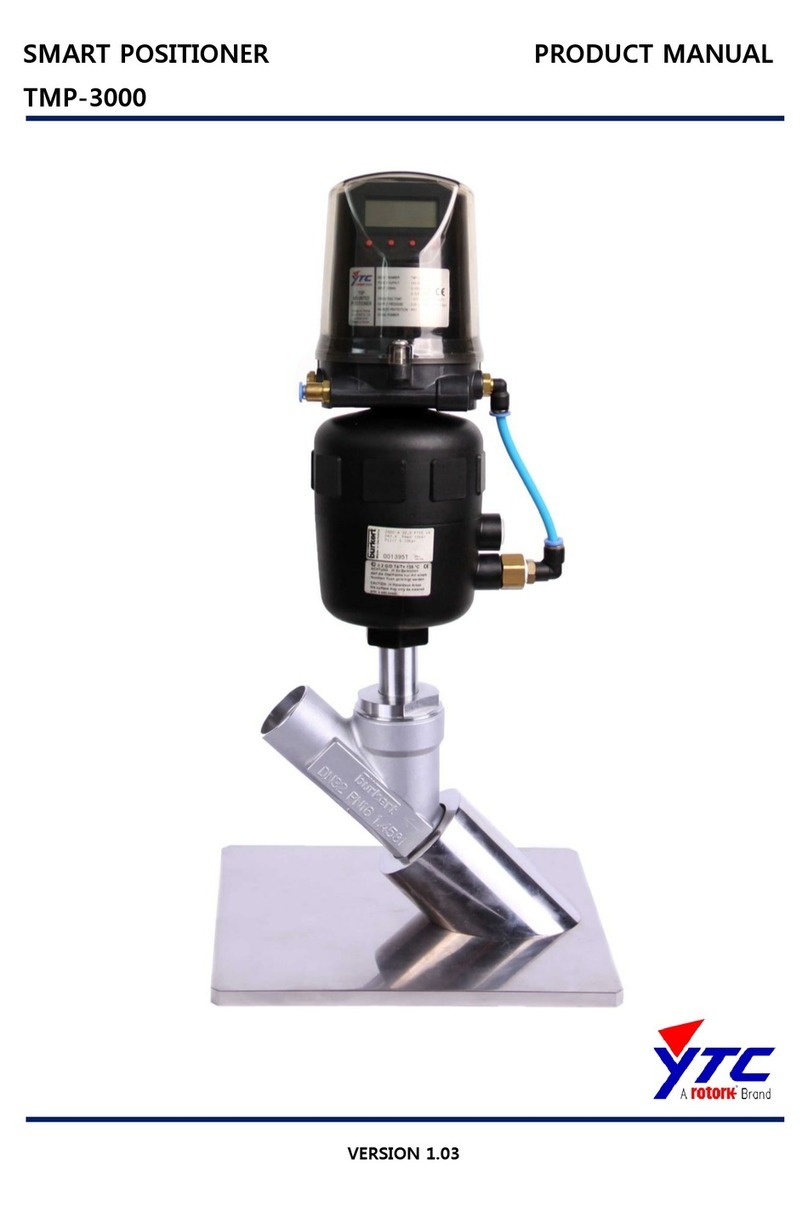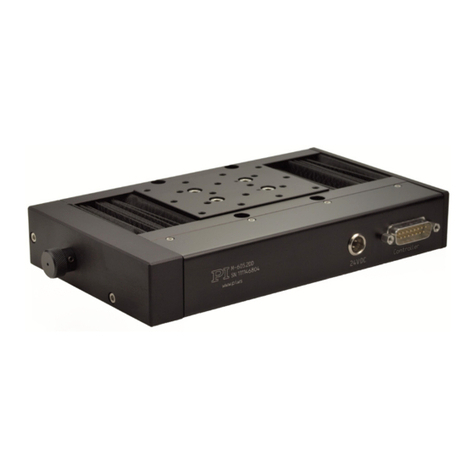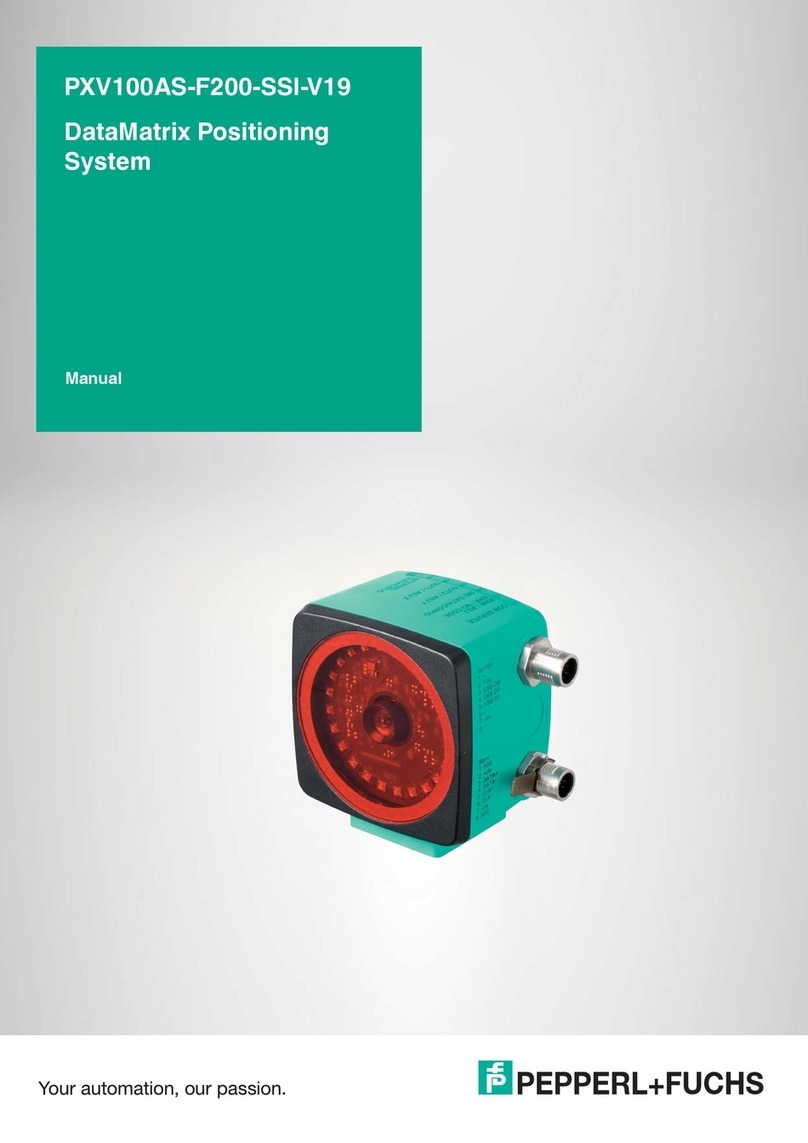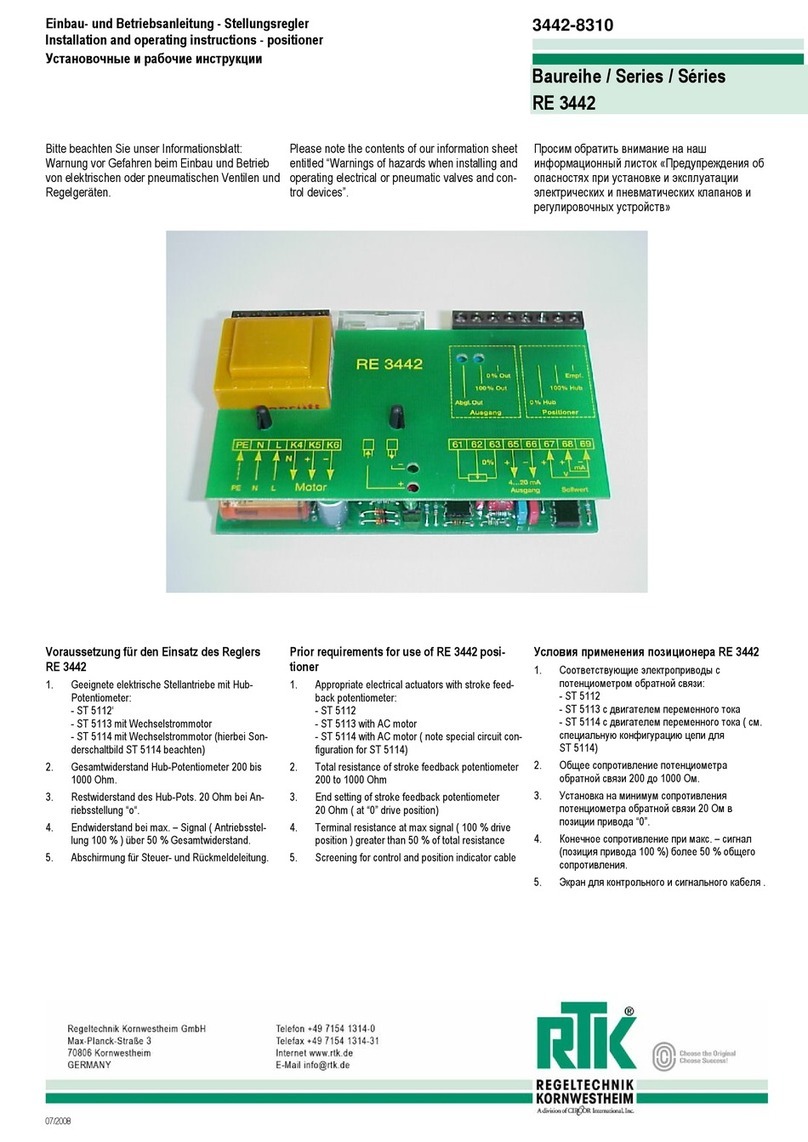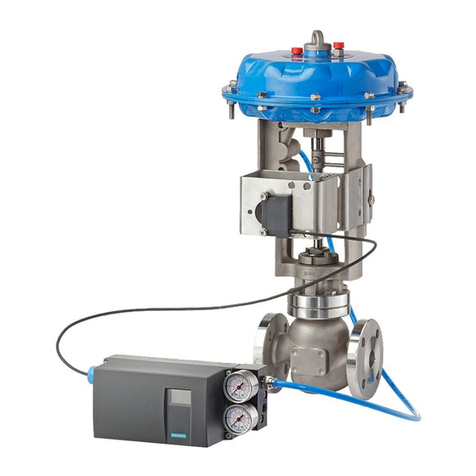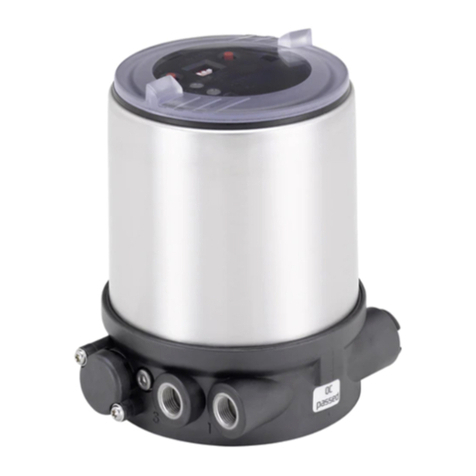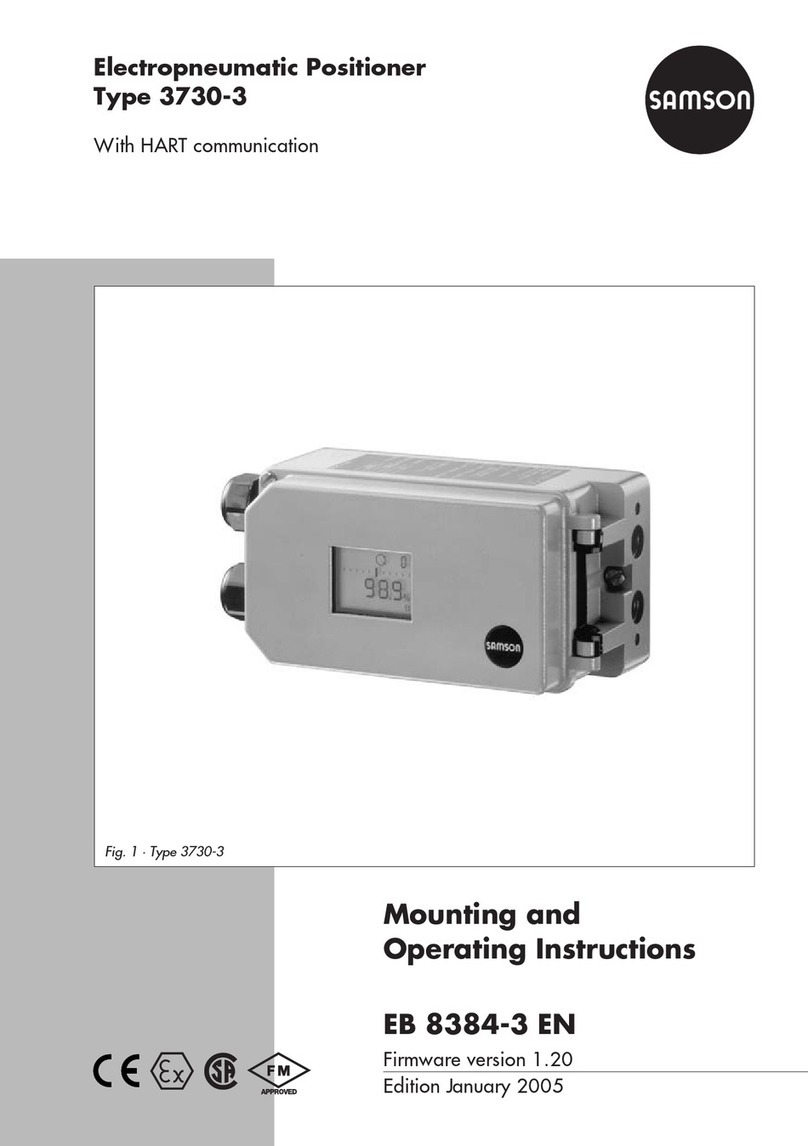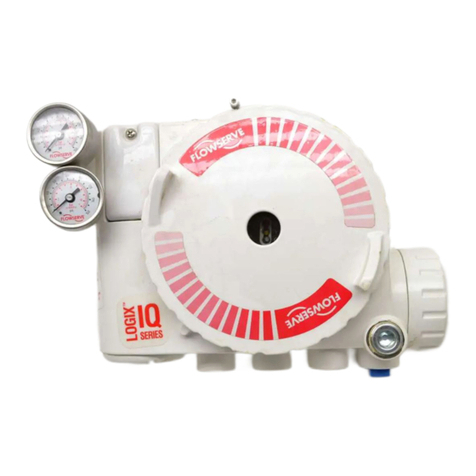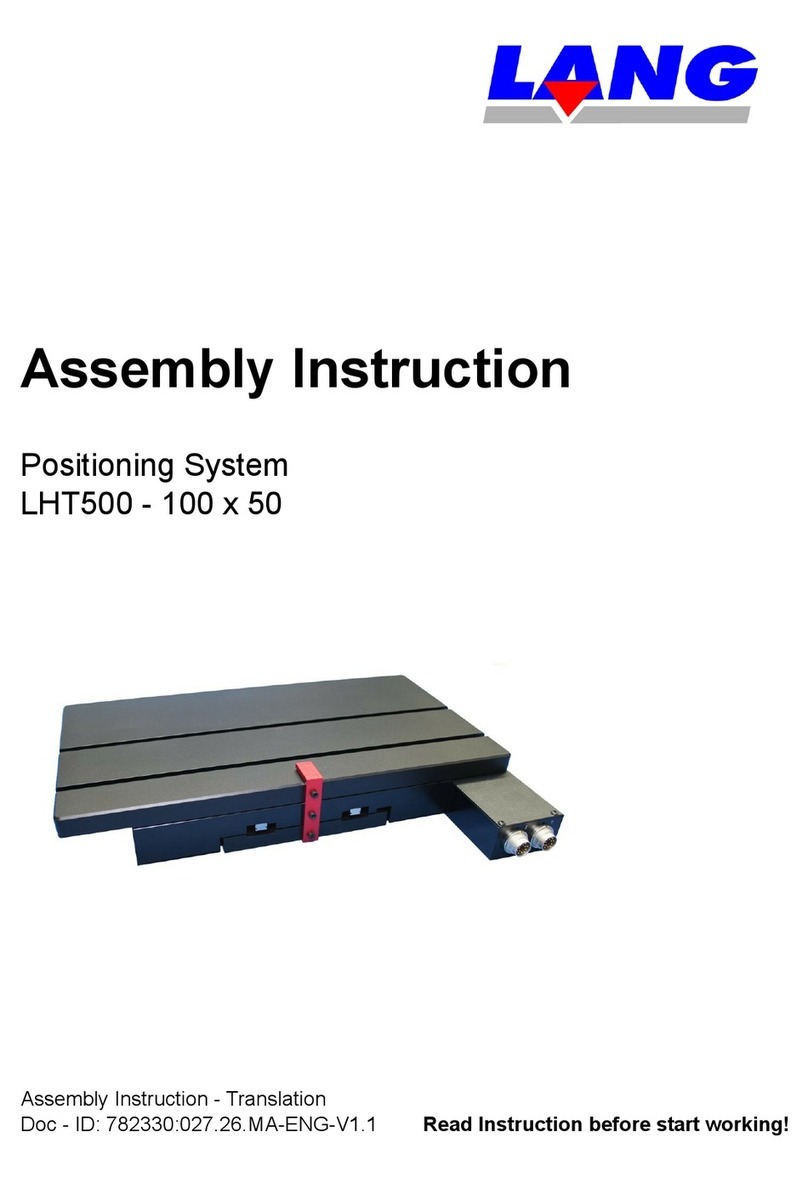IP8 000000
MPa
MPa
OUT2
ELECTORO PNEUMATIC IP8000
POSITIONER
MPa
MPa
OUT2
ELECTORO PNEUMATIC IP8000
POSITIONER
MPa
SMC
MPa
SMC
How to Order
Series IP8000/8100
Electro-Pneumatic Positioner
Type
000
100
Lever type feedback
Rotary type
Pressure gauge
0
1
2
3
None
0.2MPa
0.3MPa
1.0MPa
Nil
A
Note 3)
B
Note 3)
C
D
E
Note 4)
F
Note 4)
G
Note 5)
H
J
Note 6)
None (Standard)
ø0.7 Output restriction with pilot valve
ø1.0 Output restriction with pilot valve
Fork lever joint M
Fork lever joint S
For stroke 35 to 100mm with lever unit
For stroke 50 to 140mm with lever unit
Compensation spring (A)
With external scale plate
With opening current transmission (4 to 20mA DC)
IP8000 has standard lever for stroke (10 to 85mm)
Accessory for IP8000, 8100
small capacity actuator
Accessory for IP8100
Accessory for IP8000
For IP8000, 8100
Accessory for IP8100
Accessory for IP8100
Accessories Note 2)
Construction
0
No terminal box
1 Note 1)
With terminal box
(Exsd
BT5)
Note 1) For construction No.1(with terminal box), the ambient and fluid temperatures are as follows:
•Exd
BT5 –20 to 60°C
•Non-explosion proof (non hazardous Iocations only) –20 to 80°C
The positioner body is EXd
BT5 labeled.
Note 2) If two or more accessories are required, the part numbers should be made according to
alphabetical order. (ex. IP8000-011-AG)
Note 3) “A” is applied to approx 90cm3-capacity actuator.
“B” is applied to approx 180cm3-capacity actuator.
Note 4) Standard lever is not attached.
Note 5) It is to be used together with “A” or “B” when tending to overshoot by the use of “A” or “B”.
It is mounted to the body as a replacement of the standard compensation spring.
Note 6) With terminal box, Non-explosion proof. Select “1” for the construction.
Specifications
Type
Input current
Input resistance
Supply air pressure
Standard stroke
Sensitivity
Linearity
Hysteresis
Repeatability
Coefficient of temperature
Supply pressure fluctuation
Output flow
Air consumption
Ambient and fluid
temperature
Explosion proof
construction
Air port
Electrial connection
Wiring method
Exterior covering enclosure
Material
Weight
Item
Lever type lever feedback Rotary type cam feedback
Single action Double action Single action Double action
4 to 20mADC Note 1)
235±15Ω(4 to 20mADC)
0.14 to 0.7MPa
10 to 85mm (Deflection angle 10 to 30°)
60 to 100°Note 2)
Within 0.1%F.S
. Within 0.5%F.S.
Within ±1%F.S.
Within ±2%F.S.
Within 0.75%F.S.
Within 1%F.S.
Within 0.5%F.S.
Within 0.1%F.S. / °C
Within 0.3%F.S./0.01MPa
80l/min (ANR) or more (SUP = 0.14MPa)
200l/min (ANR) or more (SUP = 0.4MPa)
5l/min (ANR) or less (SUP = 0.14MPa)
11l/min (ANR) or less (SUP = 0.4MPa)
–20 to 80°C (Non-explosion proof)
–20 to 60°C (Flame proof and explosion proof)
Flame proof and explosion proof construction: Exd
BT5
(Certificate number: C15916 of Technology lnstitution of Industrial Safety)
Rc 1/4 female
G 1/2 female
Flame proof packing system, Sealant fitting system (explosion-proof)
Resin G 1/2 connector (Non-Explosion proof, option)
JISF8007, IP65 (conforms to IEC Pub.529)
Aluminum diecast body / epoxy resin
With terminal box 2.6kg (None 2.4kg)
IP8000 IP8100
Note 1) 1/2 Sprit range (Standard)
Note 2) Stroke adjustment: 0 to 60°C, 0 to 100°C
Explosion Proof
This product has the following approvals.
Exd
BT5: Newly established standard based on
international (IEC 79)
Use as Exd
BT5
(A) Pressure-proof packing.
As shown below in the chart, use “Cable gland” (option).
(B) Metal Piping.
Attach the sealant fitting near the cable port.
(For details, refer to “The guideline on electric equipment
explosion proof” published by the Technology Institution
of Industrial Safety.)
Pressure proof packing connector unit
Cable
Packing
Lock screw
(Hexagon 1.5)
Cable gland with flame proof packing (Option)
Part name
Flame proof packing
connector unit
Part number
P368010-32
P368010-33
Suited cable outer diameter
ø7.0 to ø10.0
ø10.1 to ø12.0
1
